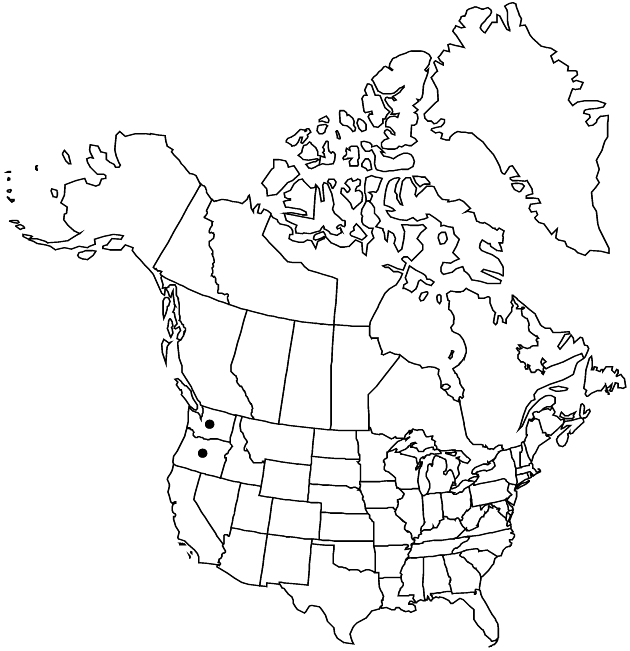Erigeron oreganus
Proc. Amer. Acad. Arts 19: 2. 1883.
Perennials, 5–15 cm; stoutly taprooted, caudices usually simple. Stems decumbent to basally ascending or erect, moderately villous, stipitate-glandular. Leaves basal (persistent) and cauline; basal blades (1-nerved or weakly 3-nerved) obovate to spatulate, mostly 20–60(–100) × 5–15(–25) mm, margins usually coarsely dentate or incised, sometimes shallowly serrate, faces sparsely to moderately villous, stipitate-glandular; cauline gradually or little reduced distally (bases not clasping). Heads 1(–4) (on branches from proximal axils). Involucres 5–7 × 9–13 mm. Phyllaries in 2–3 series, moderately villous, minutely stipitate-glandular. Ray florets 30–60; corollas white to pink, 5–8 mm, laminae not coiling or reflexing. Disc corollas 3.4–4.7 mm. Cypselae flattened, 1.2–1.4 mm, 2-nerved, faces sparsely strigose; pappi: outer of setae, inner of 15–20 bristles (weakly barbellate and curled and twisted to at least distal 1/2).
Phenology: Flowering May–Sep.
Habitat: Moist shady cliffs and ledges
Elevation: 20–400 m
Discussion
Erigeron oreganus grows in the Columbia River Gorge, primarily on the north side.
Selected References
None.
